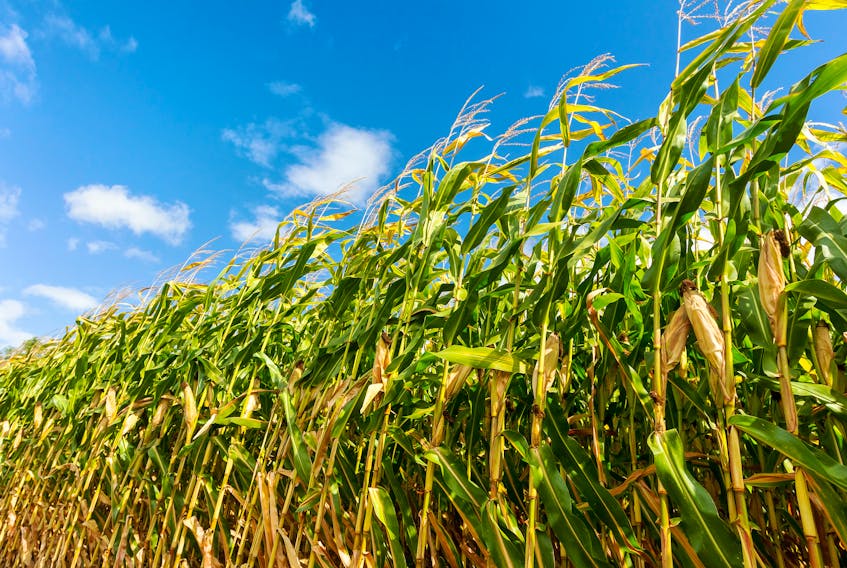PORT HOOD, N.S. — Cape Breton crop growers are still assessing damage brought by a late summer storm that toppled greenhouses and mulched corn stalks.
Chris van den Heuvel, the operator of Fireblade Holsteins in Port Hood, says his fourth-generation dairy farm typically grows grass silage, corn silage and barley to help feed roughly 60 milking cows.
After high winds knocked out power for nearly six full days, van den Heuvel relied on mixed-power generators to keep his barn, milking equipment and water pumps running.
On the island, many farmers struggled in the dark and saw widespread damage to their crops, with corn stalks being among the hardest hit.
“Almost a 100 per loss,” said van den Heuvel, a past president of the Nova Scotia Federation of Agriculture.
“Either the corn is flattened or even if it’s still standing we typically rely on a good fall, like September and early October, to allow the corn to mature and the leaves have just been shredded off. The corn is dying off now, but it hasn’t reached its maturity.”
With the grain only beginning to mature, van den Heuvel said a nutritionist found little to be salvaged from the remnants of hurricane Dorian.
Having touched down in Cape Breton as a post-tropical cyclone, the damaging system brought sustained winds and heavy rainfall for several hours.
“There are about 10-12, or maybe 15 acres of sweet corn that is grown for people that was destroyed in Cape Breton as well,” said van den Heuvel.
“That’s not even including the market gardeners and stuff like that, these are just the larger-scale growers that we’re starting to get feedback from now.”
As the lobby group representing the interests of Nova Scotia’s agricultural community, the Nova Scotia Federation of Agriculture is expected to release an online storm impact survey to help gain a better understanding of member needs.
This is the second major hiccup for Nova Scotia farmers in recent years, following an unusual frost that caused damage to plant growth in June 2018.
Federation president Victor Oulton said the back-to-back hit makes it difficult for farmers with insurance to find the money to pay their annual premiums.
In particular, Annapolis Valley apple growers and high bush blueberry growers were among the hardest hit.
Unfortunately, said Oulton it seems the higher end or more expensive varieties of apples — honeycrisp, ambrosia and sweetango — saw the biggest impacts.
“Everything from a 20 per cent loss in those crops up to an 80 per cent loss in those crops,” said Oulton. “Plus, there has been some orchards that have been knocked down too.”
Oulton said some trees were so badly damaged they will have to be replaced by saplings that will take three to four years to mature.
Nova Scotia Agriculture Minister Keith Colwell said last week that staff was visiting storm affected sites.
He would not confirm or deny whether funding help would be made available.
“We would have to see what the damages are overall, but we’re not entertaining a program at this point because we don’t have enough information,” Colwell said.
“We’re always very concerned about any risk to the industry because any risk to the industry means that it affects livelihoods, it affects our local markets, the development that we’re trying to do more and more for food security in the province.”









